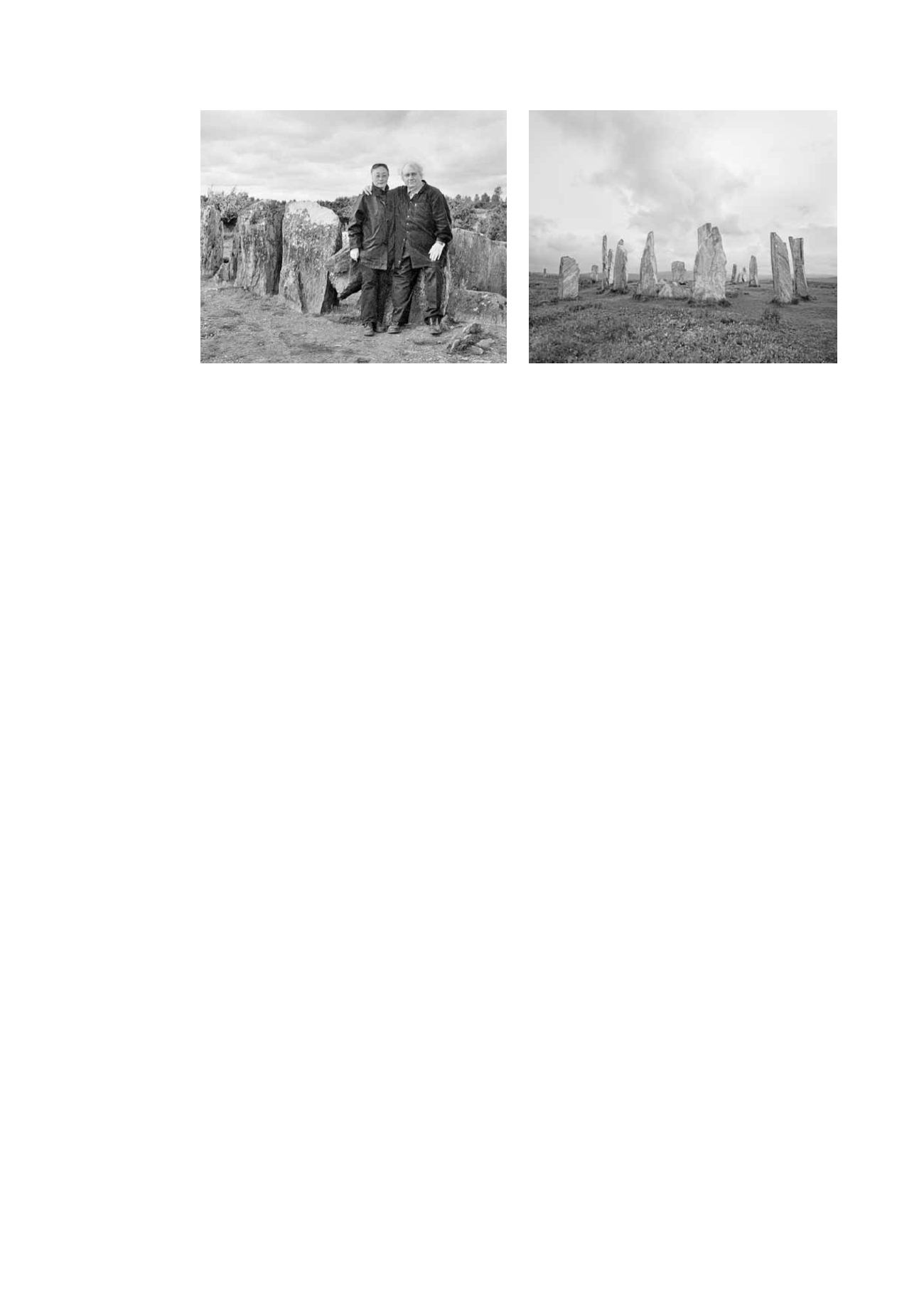
8
10 - Yuko undWin Labuda
11 -Win Labuda,
Callanish
Stone Circle II
tography.
Since the seventies I have had a special relationship to the work of
Herbert List. I’m especially fascinated by the emotional flow which cha-
racterises his photographs. This is particularly manifest in Plaster masks
I, Santorin 1937 or also in Felice Caseratis Studio, Turin 1949. The source
of the flowing in his pictures – not clearly recognisable to me – is situated
somewhere deep down in his own inner world, and then it always ends in
transcendental space. His people and objects are bound in an unexplai-
nable flow of being, which is not ‘the language of God’ in the direct sense,
as with Ernst Haas’ photographs of creation, but which still possesses an
eloquent, even unforgettable expression.
From an ethical perspective, I have always been deeply impressed by
Eugene Smith and Sebastião Salgado. Smith’s Minamata series and the
personal fate which he took upon himself with these works is even today,
in my opinion, a heroic model for any honourable photo journalist. In his
books, Salgado has conveyed to us the misery of the waves of migration
in our time and has created in this context the most beautiful photo-
graphs of fundamental humanity.
For three decades I have devoted myself intensively to photographing
landscapes, and during all of these years my unshaken model has always
been Paul Caponigro, the great American landscape photographer. He
has the ability to photograph a landscape which at first glance seems
completely uninteresting, so that the magic of the creation emanates
from it, a talent which only truly great artists have.
My sculpture photography, as is shown in the collection Photo Varia, was
certainly influenced in its development by Edward Steichen’s early pho-
tograph “Rodin’s Memorial for Balzac”. To me, this photograph with its
impressionistic character was an unconscious stimulus for many of my
works in this genre. Steichen did not, in fact, use a blur technique, but he
stimulated me indirectly to attempt it in this way.
I did not become acquainted with the work of the great American photo-
grapher Harry Callahan until late in my life. I find his work in part exem-
plary in its concentration on sparse pictorial content; in this respect it
seems almost minimalist. Until now, however, I have not consciously
been able to implement this insight in my photography.
I feel comfortable in the spiritual companionship of the photographers
whom I have mentioned and from whom I have learned; they have
become my roots. That is why I have deliberately answered this question
in such detail – and also to express my gratitude.


